Barcelona
Barcelona. Just the utterance of its name speaks of a sunny disposition. What is it about the Catalan capital that simply exudes the energy of life?
We arrived into the surprisingly vast city of Barcelona in the middle of Monday afternoon. I say surprisingly vast because although the main city is concentrated on a region bounded roughly by Monjuic Hill, the sea and the mountains, the suburbs sprawl out for kilometers to the west. The airport was our first destination, chosen as an easily navigated point (and compared with the city centre, a less congested point) at which to drop off our car after the thirteen-day journey from Rome. With the formalities out of the way, we boarded the super-convenient Aerobus to the city centre. The ride was efficient and comfortable, save for a crazy French crackwhore of course decided to sit directly behind us! She disembarked barefoot and screaming one stop before us at Placa de Catalunya. Placa de Catalunya is to Barcelona what Federation Square is to Melbourne, what Mall Road is to Lahore, Town Hall to Sydney and Marina Beach to Chennai; it is its civic and social heart. Like many of the aforementioned places Placa de Catalunya is not particularly beautiful, but the spectacle of the square exists in the form of the people of all walks of life who come here to meet, eat, arrive, depart and simply watch the world go by. Placa de Catalunya is also a symbolic heart of Barcelona, the capital of Catalonia. Catalonia (from which the square takes its name) is the moniker of this province of Spain, ethnically and linguistically separate from the rest of the nation. The language Catalan is the official language of the state along with Spanish, although only in nearby Andorra is Catalan truly a national language. However many Catalonians would like that to change, and to make Catalan the national language of a new nation with Barcelona as its capital. More on this at another time, suffice to say that recent dissatisfaction with the government in Madrid has inflamed domestic tensions, and the
ongoing economic crisis has provided wind to the already-large sails of Catalan independence. As we walked the short distance from Place de Catalunya to our hotel, we spotted several of the bright yellow and red flags of the Catalan state.
Monday evening was spent strolling La Rambla, the two kilometre long pedestrianised street linking Placa de Catalunya to the seafront. Shady trees, tourists walking hand-in-hand, gelato vendors – La Rambla is the stuff that holidays are made of. Despite being incredibly touristy, its hard not to enjoy a stroll down here, and this was the first of many occasions we would find ourselves walking the promenade. A recent (and informal) extension to La Rambla exists beyond the seafront in the form of Rambla de Mar, or Rambla of the Sea. Here, a jetty-style bridge seemingly floats out across the water, linking one side of the small boat
harbour to the other. Across the water lies an entertainment district, but the Rambla de Mar provides a perfect place to go sunsetting – one of my favourite pastimes in a city like Barcelona. The concept is simple – sit by the waterside and watch the world go by until the sun sets. Cool drink in hand is optional, but recommended. Camera is also optional, but must not get in the way of forgetting one’s cares. Some cities are better suited to sunsetting than others, and Barcelona fits the bill nicely.
On Tuesday I went for a stroll around Barcelona’s gorgeous Gothic Quarter, Barri Gotic. Like the historic centre of Rome, lanes twisted and turned around small plazas, restaurants, bars and cafes. Cobblestone streets shaded by tall, stone-façade houses, their balconies overflowing
with floral colour. It is so easy to get lost in these parts, but La Rambla is a key feature running alongside the whole neighbourhood. However it is so much more fun if you do get lost – happening upon a small square or quaint building which no-one else you know has visited, like a treasure trove of secret experiences saved up just for you. The central icon of the Barri Gotic is undoubtedly the Barcelona cathedral, a giant gothic masterpiece ringed on the inside by individual shrines, each covered in gold. The huge tourist numbers at the cathedral do not destroy the otherwise respectful atmosphere. In fact the height of the cathedral, whose rooflines arch upwards into the signature gothic-style spires, seems to absorb much of the noise made by the numbers passing through. Another, more reverential atmosphere can be found at the Basilica Santa Maria del Mar, in the nearby La Ribera neighbourhood. This sublime church is home to a largely darkened main hall, lit mostly by the flickering candles around the edge and the subtle electric lights against the stone walls.
However nothing can quite prepare you for the sheer beauty that is Barcelona’s icon, Sagrada Familia. If you don’t recognize the name, then you’ll surely recognize the structure. Built in the modernist style, it features four large pointy towers shooting straight up above the entrance to the cathedral hall. It was designed by Gaudi, Barcelona’s master of modernism, who was inspired by gothic, religious and modern styles when construction began in 1882. So intricate and elaborate was his design that when Gaudi passed away forty years later, he had only witnessed the completion
of the underground crypt, the central altar and one of the facades. Years of slow work and political turmoil in Spain meant that construction dragged on. In fact Sagrada Familia is still under construction, and is slated for completion in 2020, 138 years after it was begun. In short, it is a mammoth project, and undeniably Gaudi’s masterpiece. We visited on Wednesday and even after standing in the queue for around one hour, it was easily worth more than the 18 Euros we paid to enter. Nothing can quite prepare you for the scale of this huge project. When complete, it will comprise eighteen spires. That’s four small ones (around 100m) over each of three street facades, a total of twelve to represent the twelve apostles of Jesus Christ. Each of the three facades will have its own intricately sculpted design, each with a theme of the life of Jesus. The first façade to be completed was the nativity façade, featuring around seventeen individual sculpted scenes telling the story of Jesus’ birth. A similar number of sculptures complete each of the ‘glory’ and ‘passion’ facades. Above these, and closer to the centre of the building, a further four towers (numbers 13 to 16) will reach even higher, each
representing one of the four evangelists. At the back of the complex, the only side which does not feature a sculpted façade will feature the seventeenth highest tower, paying respect to the Virgin Mary. Finally, atop the central prayer hall will be the church’s tallest and eighteenth tower, capped off by a massive crucifix, and representing Jesus Christ. The interior of the cathedral has to be seen to be believed – the chunky columns reach for the lofty ceiling before branching out like trees in a
beautiful stone forest. The multicoloured stained-glass windows which Gaudi envisioned are slowly replacing the temporary clear glass portals, and already cast brilliant spectrums on the floor and the silvery organs in the altar. Staircases spiral skywards in the corners, leading to balconies where one day the faithful will be able to sit in prayer,
while on the doors, entire sections of the gospel are carved in granite. There are simply no words to truly convey the awe which we felt as we stumbled around the spacious atrium. More than spectacular, the sheer brilliance of the artistic style left us dumbstruck – such a blend of modern, ancient, religious, natural, gothic, progressive and downright outlandish. We walked back towards our hotel afterwards thinking of what we had seen, wondering if we would ever be able to truly digest the spectacle. The district between Sagrada Familia and Placa de Catalunya is called L’Eixample (pronounced “uh-shamp-leh”, meaning ‘the extension’), and is also home to some of Gaudi’s architectural designs, however I strongly recommend viewing these before Sagrada Familia, or risk a serious anticlimax.
I struck out that afternoon for Montjuic Hill, the large urban park which covers a small mountain overlooking Barcelona’s city centre. Some may recall Montjuic Hill as the site of the 1992 Barcelona Olympics, and the stadium is still standing (along with the cauldron, target of one famous flaming arrow). The stadium is free to enter. The 1992 games were memorable for several reasons, not least of all as one of the best Olympic
games in history. For years, the Olympics had lost their lustre; the violence in Munich 1972, a catastrophic budget blowout in Montreal 1976, political boycotts in Moscow 1980 and Los Angeles 1984, drug scandals in Seoul 1988. In 1992 Barcelona returned a much needed element of joy to the games, one that was arguably to last to the present day. Additionally, it was the first Olympics since the collapse of the Soviet Union, and the mood in much of the western world was upbeat about what the future held. But most importantly, the games served as a sort of ‘coming out party’ for Barcelona, which for years had suffered under the Franco dictatorship, during which time Catalan culture was severely repressed. Montjuic Hill gave Barcelona an unrivalled location from which to demonstrate its beauty to the world – the swimming pool used for the diving competition (and, eleven years later, featured in Kylie Minogue’s music video for ‘Slow’), still exists. Swimmers can bathe with
the trademark city skyline view every summer when the pool opens in late June. Further up the hill is Montjuic Castle, which, if the pool is closed, affords equally good views of the city. I skipped the expensive cable car ride to the top and took the leg-breaking walk up – my pocket thanked me, but my calf muscles didn’t. After an ice cream at the top and more than a few photo opportunities, I walked back down and took the furnicular railway back to Paral-lel station near La Rambla.
That night we went out for dinner and had paella, a typically Barcelona dish that, reflecting the city, is sort of a mix of everything. Rice, seafood, citrus flavours, vegetables – they’re all in there and totally delicious. Another typically Catalan (or Spanish) experience is tapas – select a few small plates to share, and keep ordering until you’ve had enough. It can be eaten as either a light, shared dinner, or an early evening snack (people in this part of the world eat dinner late). We had tapas on Thursday night, our last night before leaving Barcelona, after
spending the day at the MACBA, Barcelona’s Museum of Contemporary Art.
There are some cities that I have fallen in love with instantly (such as Paris, Rome or Delhi). There are some cities that I have disliked initially, but grown to like them (Shiraz and Istanbul), or at least appreciate them (Mumbai and Bangkok). But Barcelona is a much, much slower burn. On my first night I described it as ‘nice’. However it was in the following days that I began to love Barcelona – like a summer romance, it remains smouldering in the memory, ready to ignite at any time. So Barcelona is a winner on many fronts. It was sunny (for us, at least!), it’s alive, unique, diverse, positive and full of the joie de vivre, but above all dynamic. I think the key to understanding Barcelona and liking it as we did is to expect the unexpected. There is so much to offer in this city, and so often it is surprising. If you think it will be a package holiday tourist trap, then walk around some of the more authentic parts of Barri Gotic. If you think if will be nothing more than sun-bleached Mediterranean city, then sample its vibrant arts scene. If you think it will be old, then visit the edgy El Raval neighbourhood, and if you think it will be modern, then go to Barcelona cathedral. And really, if you still don’t like it, then go to Sagrada Familia – that once-in-a-lifetime experience would silence even Barcelona’s harshest critics.
When to go
Summer in Europe rocks – June, July or August are all great! Winter isn’t terrible – but be prepared to rug up.
Essential Stats
Culture shock: 5/10
Language difficulty: 4/10
Quality of food: 7/10
Cost: 8/10
Physical demand: 3/10
Advice and warnings
Barcelona has a problem with theft, particularly pickpocketing from tourists during busy seasons. Keep a close eye on all your valuables.
Check Smart Traveller or the British Foreign Office for comprehensive warnings.
Visas
Most Australians may enter Spain without the need for a visa. Pakistanis and Indians must apply for a Schengen visa, which grants entry to several European countries which are part of the Schengen agreement. Pakistanis must pay PKR 7156 for a Schengen visa – the process takes around three weeks. Applications in India cost around INR 4277, and take less than 15 business days to process. Apply through your nearest Spanish diplomatic mission (Islamabad, Mumbai).
Getting there and around
From Melbourne, Lahore, Sydney and Chennai, Emirates flies to Barcelona via Dubai.
Melbourne from $1970 return
Lahore from PKR 117,398 return
Sydney from $1988 return
Chennai from INR 51,927 return
Accommodation
Budget options can be booked through Hostelworld, while midrange options are available through websites such as Expedia. We stayed at the luxurious Le Meridien La Rambla.
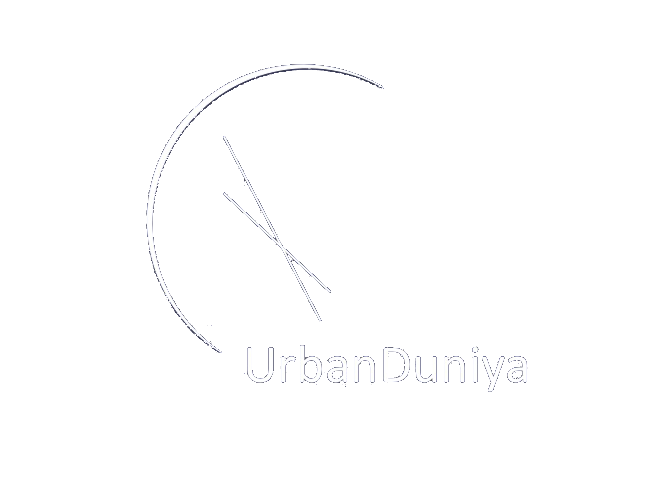
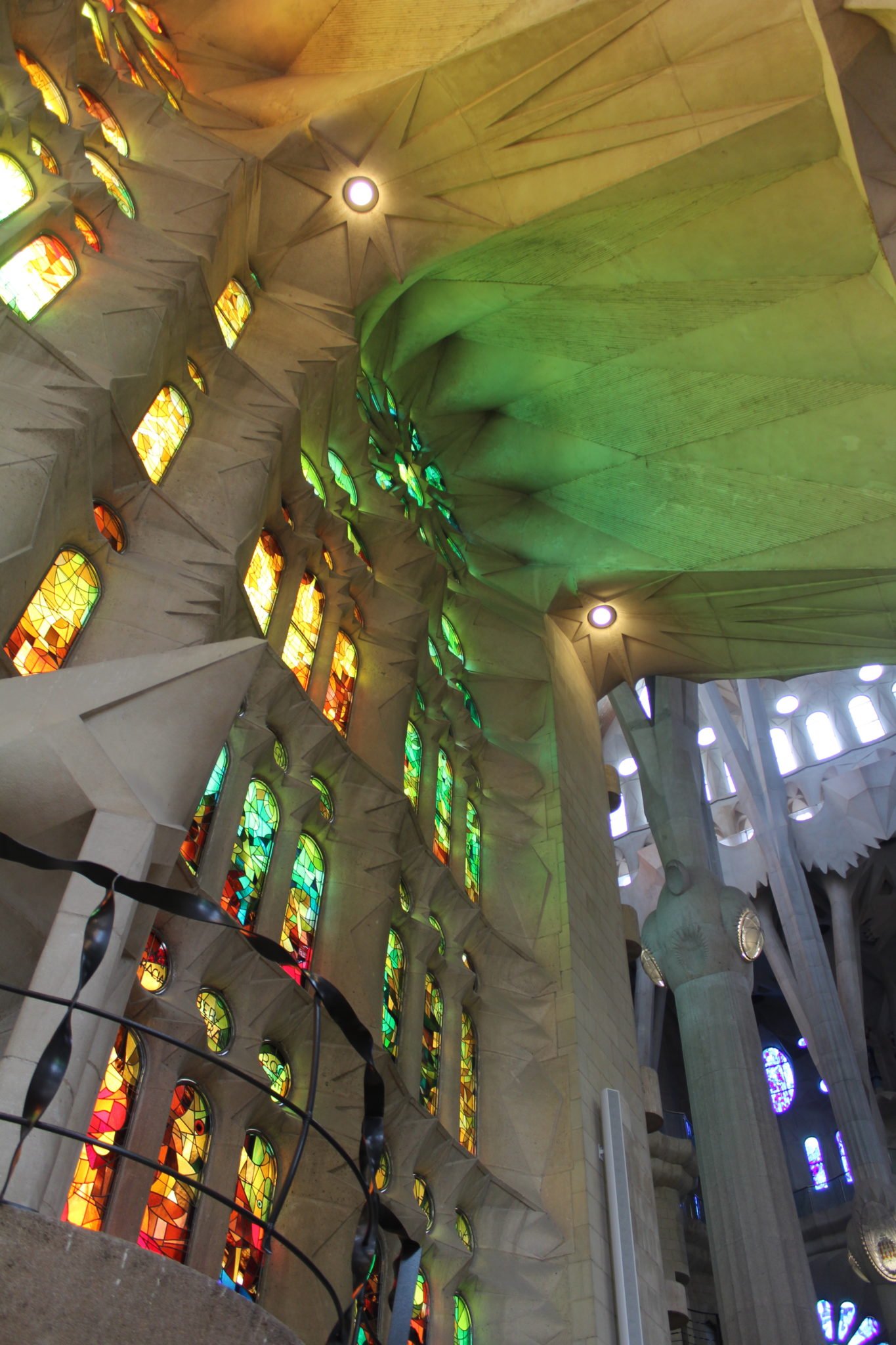
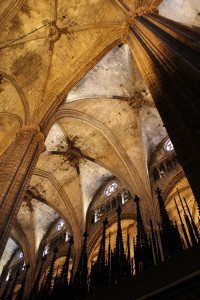
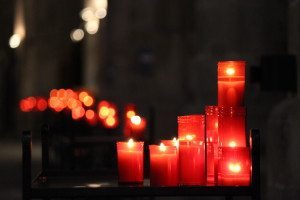
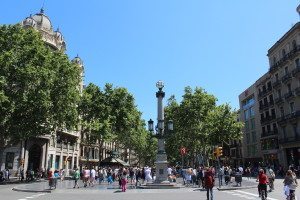
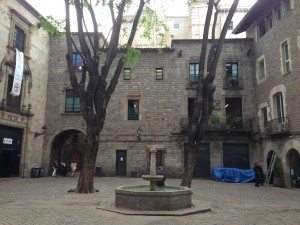
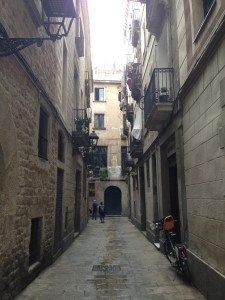
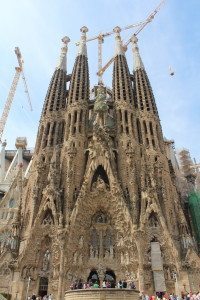
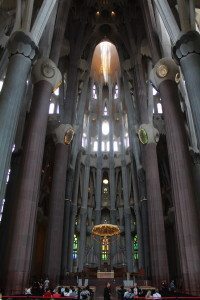
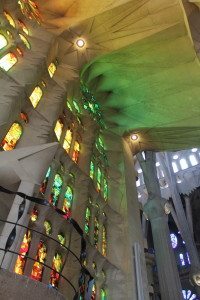
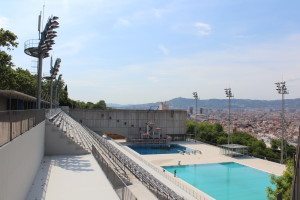
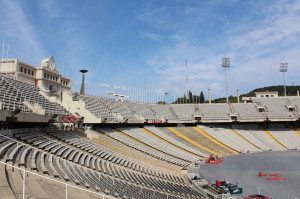
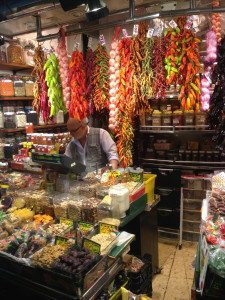
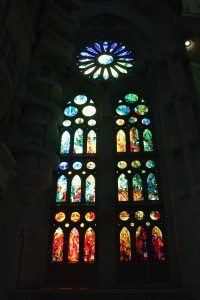
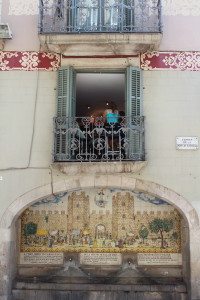
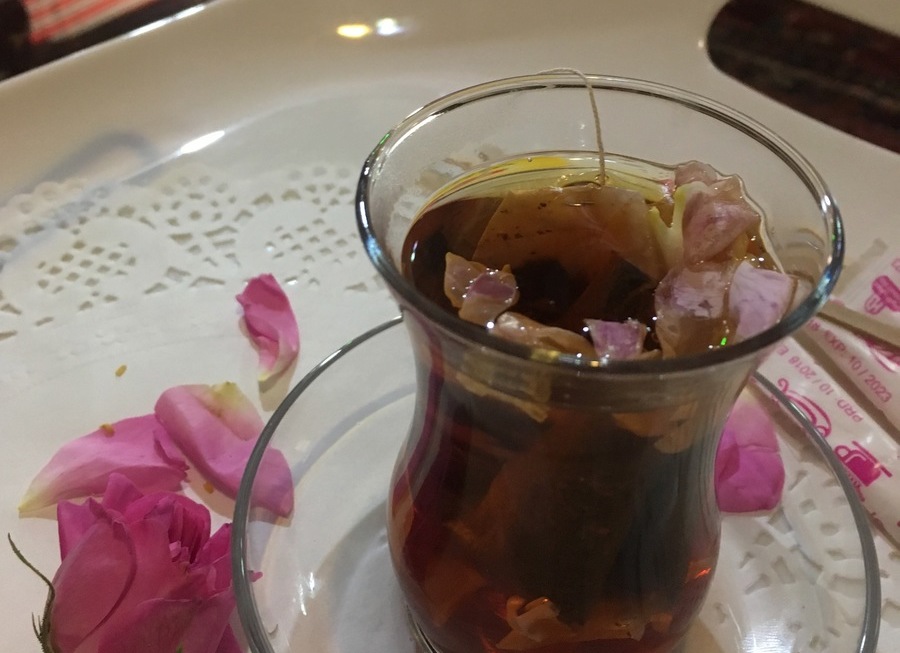


We have been to Spain, but we didn’t go to Barcelona and you know what… I so regret it. I’m actually thinking of going there this summer. Sagrada Familia is on my bucket list – great photos!
Thanks Agness! Barcelona is awesome, but I actually have the opposite problem – I didn’t see anywhere else in Spain! We’ll need to sit down over several coffees some time and swap stories 🙂
In 2017 it was our third visit to Antoni Gaudi’s fabulous La Sagrada Familia and yet again we were in awe!
The detail in this cathedral is mind blowing… from a distance, it looks very Gothic in nature but then you get closer and every single element leaves your jaw hanging. From the lighting, the tree-like columns, the sculpture… It’s safe to say we have witnessed a work of art in the making!
Ironically, the most visited building in Barcelona had been building without a legal permit from the municipality. Only recently permission has been given to La Sagrada Familia, in April 2019, after 134 years of construction working. They’re aiming to finish construction by June 2026 – this will coincide with the 100th anniversary of Gaudí’s death.